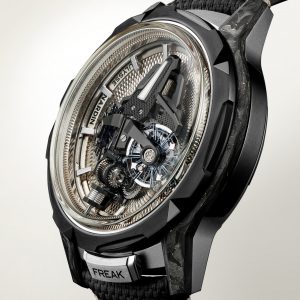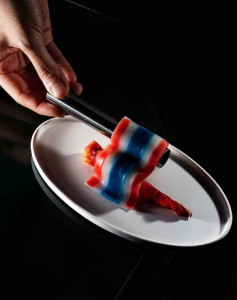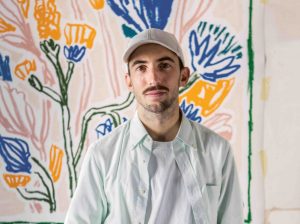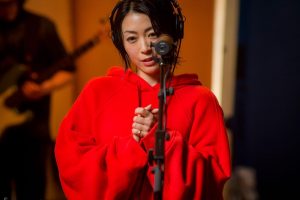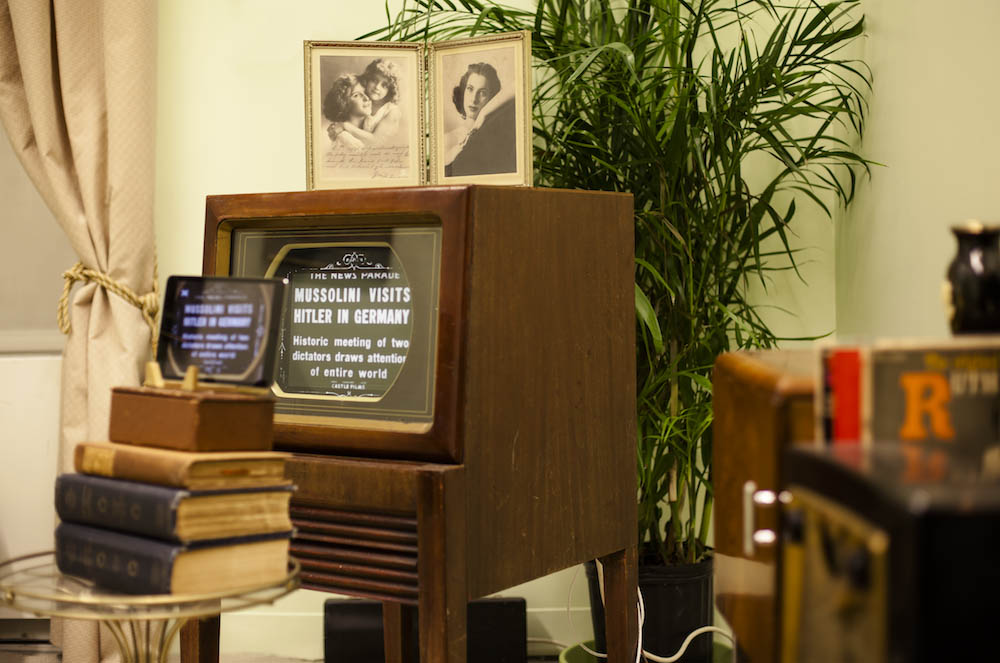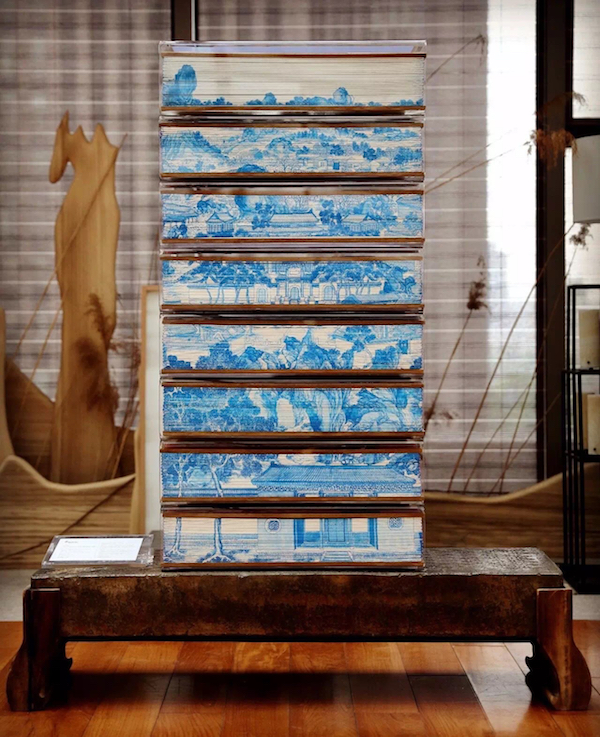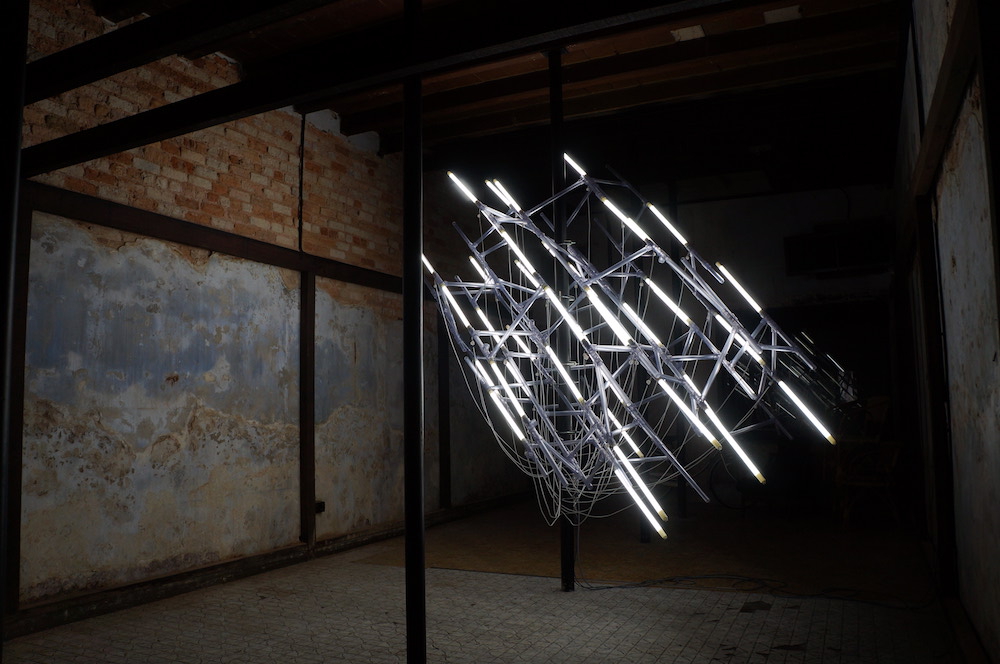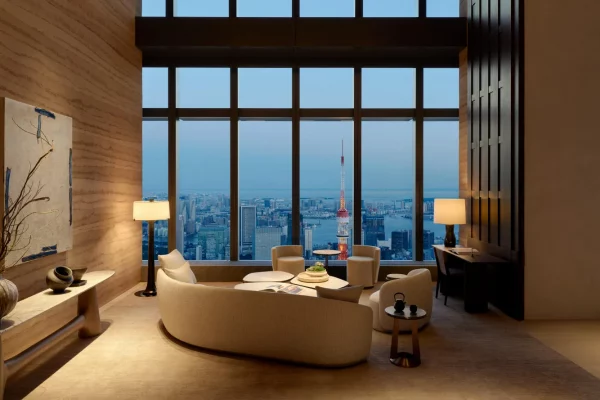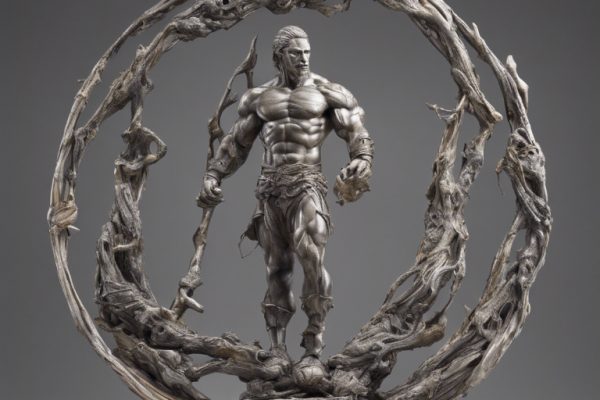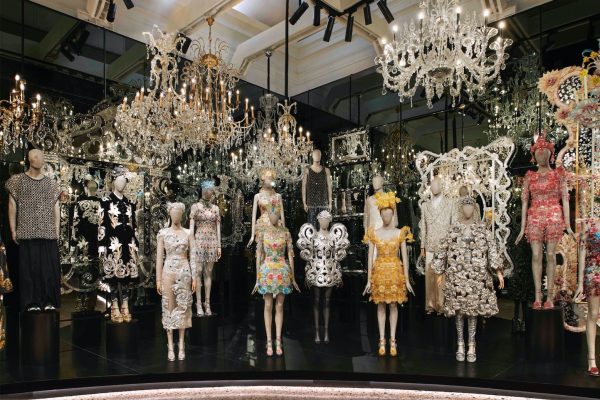Today, pretty much anything can be art. But the tricky part is that not everything qualifies. What demonstrably makes something a piece of art and how do we know when we’re looking at one? Aye, there’s the rub. And furthermore, consider the means by which we judge art – financial value, popularity, art-historical significance, aesthetic sophistication, decorative merit, degree of fun; all the criteria tend to conflict and contradict. There are no easy answers – only more questions.
Into this melting pot of artistic possibility strides Ying Kwok, Hong Kong’s super-curator of the moment. The day before we meet, she’s at the city’s M+ gallery for the opening of Samson Young’s Songs for Disaster Relief, a show she helped him curate. Last year, as curator, she also oversaw Hong Kong’s participation in the 2017 Venice Biennale. This month, for Art Central’s fourth edition, Kwok curates the Projects sector, which is dedicated to six large-scale immersive installation works that expand audience engagement. It’s Art Central’s version of Art Basel’s Encounters, if you will.
“I try to understand the concept of the fair,” explains Kwok. “Whether I’m working with a fair or an institution, I always tend to understand who my audience is first, and I think that will slightly inform the way that I interpret and choose the work.” She adds that Hong Kong’s art world is broken into organisations and institutional parts, and that each has its own audience. “With any art fair, you’ll get attention from the professionals, of course, but you’re also facing a big group of the general public who want to see art because they think it’s a perfect opportunity to see so many different things – with international art and artists from very different backgrounds. So the expectation goes beyond just gallery or institutional thinking, and this is something we [as curators] must bear in mind.”
How much does Kwok feel Art Central has found its voice – or branding – as of yet? “If I had to compare it with Art Basel, I would imagine the audience for Art Central wants something more surprising or refreshing from its art,” she says. “Maybe I’m allowed to use the word ‘quirky’. I think you’d see quirkier work at Art Central and that it has the feeling of being more for the general public. What it can offer is definitely an opportunity to draw people together, but I think for an art fair, there needs to be a clear message. Push the boundaries and test something out, even though it might be sensitive or controversial – just have a clear message every year. That would be quite a positive approach. But again, it has to match the overall cultural landscape. In some ways, I’d also like to see more discussion about the art economy – I don’t think I’ve seen enough of that. It’s such a big resource; why don’t we plan earlier? I wish more about that could be done.”
Kwok also feels Art Central is in a position to absorb or stimulate more risk-taking, and to show more critical work. Time or, not atypically, a lack thereof, has been a factor in her approach. “I think often the choice at a fair has a lot to do with time rather than how open-minded people are or aren’t being,” she says. “I do think Art Central is a very good platform; it already has the 4A creating programmes. [See Sampson Wong and Lam Chi-fai’s Pavilion for Our Living, a comment on Hong Kong’s housing crisis]. Maybe in the future, it can send out the message earlier that it wants to push the boundaries and bring in more social concerns with the arts. That’s a good thing. I think there is an audience for that. The artists are outgoing and can do this, but not so much in a gallery show.”
Back to Projects, Kwok was immediately struck by the power of certain works. “There are two in particular that I wanted to include the moment I saw the proposals,” she enthuses. “One was Dream of the Red Chamber in accordion-dragon scale binding by Zhang Xiaodong.” In Chinese culture, book-binding is widely considered an art form within itself and a pillar of cultural production; Zhang is among the first to revive this intricate method and his entry has taken more than four years to complete. The 1,000-year-old manuscript is widely recognised as one of the four great novels of classical Chinese literature. “The artist has a thorough understanding of his heritage – the ancient Chinese book-binding technique and the great Chinese classical literature, a genius combination of classic and contemporary with lots of details. It looks and feels like a performance when someone reads, or flips through, the book.”
The collaborative piece Future Past News by Chile’s Andrea Wolf and Brazil’s Karolina Ziulkoski also caught Kwok’s attention. “The work employs augmented-reality technology, which seeks to expose the disturbing parallels between current global a airs and the pre- war turmoil of 1937,” she explains. “The period setting provides a surrealistic reading environment for the work.” Viewers are immersed in a 1937 living room, where a television set plays archival news footage of the period. The newsreel ends with an ominous message reading: “In the hands of these five men rests the destiny of the world: Mikado, Stalin, Hitler, Mussolini and Franklin Delano Roosevelt.” Via an iPad, loaded with an augmented-reality app, the news of the pre-war period is eerily layered with present-day news, making for a disconcerting juxtaposition.
Placed across the fair, the selected works respond to the volume that the custom-built structure provides, allowing for critical appreciation of works that would otherwise be limited by the size of the traditional gallery booth. “We’ve brought together a selection of international artists who push the boundaries of their own artistic medium, resulting in a display of refreshing outlooks,” says Kwok. “Some of them try to adopt their cultural heritage, but with a contemporary new twist; the others surprise us with a creative artistic sensibility to reinvent familiar modern content into new experiences. We have only selected a small number of projects, so they’re all of high quality.”
Kwok is also enthused by the below-the-radar nature of some of the artists who are showing. “In general, there are many galleries present in Art Central that are new for me,” she says. “They aren’t the bigger fish in the pond, and are showing some things that are refreshing and have less exposure in the international art fair world. It’s an interesting journey of discovery.”
Talk of parallels brings Kwok’s experience and challenge with Art Central sharply into focus. Kwok studied fine art in the same class as reclusive poster-boy of the Hong Kong art world, Tsang Kin-wah, who, like Samson Young, has also represented the city at the Venice Biennale. Kwok helped with Tsang’s first show in the UK and she even remembers Hong Kong’s baptismal appearance at the Venice Biennale back in 2001.
“For the first three editions of the Venice Biennale, I think we were still trying to discover how it worked, and understand the position of Hong Kong in the international art market and landscape,” she recalls. “They were sort of wide open, in a sense. Hong Kong artists haven’t had the resources they deserve to bring their careers to another level. But we can see that Hong Kong is more and more ready for that.”
Despite her reputation as an innovative, independent figure who’s exploring the “boundaries of collaboration” between curators, artists and the wider community, Kwok never trained formally as a curator. She graduated from the fine arts programme at the Chinese University of Hong Kong in 2000, then received her master’s degree from the Chelsea College of Arts in London in 2004. Subsequently, she set out on a career path in the arts, but found her “art couldn’t catch up with her brain” and felt unable to explore the world through that medium. An opportunity as a curator arose at the Chinese Arts Centre in Manchester, England; despite her credentials not matching the requirements of the post, she was hired in 2006 and told to “bring something to the organisation.”
A host of shows and the introduction of various Chinese artists followed, along with film festivals, and Kwok stayed there for six years. During that time, she built up a wide network of contacts in the UK and Asia through frequent collaborative projects. She saw Chinese art burgeon through shows at the Tate, the Hayward Gallery, the V&A and more. Despite that initial success, she says the feeling a few years later was that “Chinese art doesn’t really connect to the overall interest in the global landscape.”
How does Kwok feel about the bold, ambitious, almost cosmic eccentricity of mainland contemporary art versus the increasingly inward-looking style of Hong Kong work? “It was the way we were educated,” she explains. “Somehow, inward-looking makes it difficult to understand, but it’s appealing to people who want to know more and can find a way to connect.” She agrees with the sentiment about the difference between mainland and Hong Kong art. “Hong Kong is a city. It is not an island, but it has a kind of island mentality and a very local sense of belonging to our own customs. What we belong to is not something very exotic. Maybe the inward looking-ness is therefore more natural.”
She goes on to make a perceptive point about artists and their work at fairs. “Once we show a piece of art, it’s not so much about what an artist wants to say, but about how we see the work. And that’s a very, very different thing.” And what’s Kwok’s definition of success for herself at Art Central as a curator? Humbly, she poses: “I want more people to talk about the artists.”
This feature originally appeared in the March 2018 print issue of #legend










